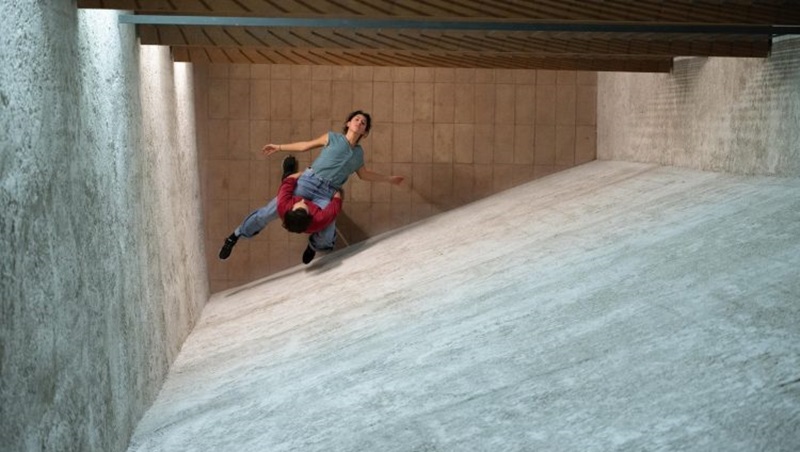The first flight of the Martian drone, which would take place on the night of April 11-12, was finally postponed until at least Wednesday April 14 by NASA. After surviving the first few nights in extreme weather, where temperatures can drop below -90 ° C, one of the Ingenuity subsystems did not respond favorably. If the flight was delayed, it is mainly because NASA teams only have one chance to send it and there is no going back. But why so much caution for a simple drone flight?
At least on Wednesday April 14, NASA could fly the Ingenuity, a small motorized drone helicopter for the first time in the air, parallel to the March 2020 mission. The mission that would take place on the night of April 11-12 took place than postpone after a failure during one of the pretests. As NASA itself explains, a remote reinstallation of your guide software is required. But why does the theft of this small machine weighing less than 2 kg arouse so much love and enthusiasm? We explain it to you.
With this mission, NASA wants to demonstrate that it is possible to fly in the atmosphere of a planet other than Earth. The goal is not to collect scientific data, but to demonstrate the utility and interest of having an air vehicle on Mars. The small helicopter attached to the chassis of the Perseverance rover measures 13.6 cm by 19.5 cm at the level of the fuselage (body to which the wings are attached) and 1.21 m at the level of the rotor. The aerial vehicle weighs just under 2 kg. And for its first flight, it is expected to climb 3 meters above the Jezero crater, from where it will take off.
The objective of the Ingenuity drone is to stay in flight for 20 to 30 seconds and make a small turn once in the air before descending to the ground. I never saw! This flight, if it materializes, will mark a great debut in the history of aviation and astral exploration. Never has a remotely controlled machine flown on a planet other than Earth.
The Ingenuity mission will last 30 Martian soils (31 days on Earth) and should include 5 flights. The first will obviously be the most important and each flight will not exceed 90 seconds. This experience will be immortalized by the Ingenio itself, which has two cameras, one pointed at the ground and the other in front of you that will allow you to capture images that promise to be spectacular.
-
Because the mission is a challenge for physics
The current conditions on the planet Mars are difficult obstacles to overcome in the Ingenuity helicopter and drone flight project. In fact, the atmosphere of Mars is totally different from Earth’s: it is 100 times less dense than ours. Thus, our weight on Martian soil is reduced in the same way as that of Ingenuity (680 g on Mars). Consequence: more energy is needed to get off the ground, so NASA’s little machine will have to redouble its efforts to achieve its goals. Fortunately, the drone was designed with the prospect of overcoming every conceivable difficulty. It is light and powerful enough to take off in the thin atmosphere of Mars, thanks to its blades that rotate at 2,400 revolutions per minute.
Furthermore, this little gem of technology cannot be monitored live, as the information is transcribed twenty minutes later on Earth. Therefore, the flight plan must be uploaded to the drone in advance. Finally, the flight of an air vehicle over the red planet requires taking into account new conditions and challenges, but visibly surmountable for NASA.
-
Because it opens up new perspectives for space
A drone would be very useful in conjunction with rovers to optimize their movements on Mars. A vehicle like Curiosity, installed on Mars since 2012, reduced the visibility of its surroundings, while a drone could take off and collect information in a larger area. The success of Ingenuity, therefore, would open a new future in the exploration of the Martian system. This mission can also determine whether it is possible to send a larger, remotely piloted helicopter to the planet Mars.
NASA has been working on the idea of flying a drone on Mars for 8 years. France (and more particularly the Toulouse-based teams) also embarked on the race to design a Martian microdrone. From 2015 to 2019, Thibaut Desert (doctoral student at Isae-Supaero and Onera) conducted an aero-propulsive study of a rotating automobile microdrone for Martian exploration. The drone designed in collaboration with Onera, ISAE-Supaéro and Cnes is a more compact model than the Ingenuity (30 cm in diameter). It was tested in a camera that reproduces the Martian atmosphere. France’s goal is to show that an even more compact concept than Ingenuity could fly to Mars by 2022.





:format(webp)/cloudfront-us-east-1.images.arcpublishing.com/grupoclarin/XM6EP3SM5REKNBOIXJSOCDCOOA.jpg)